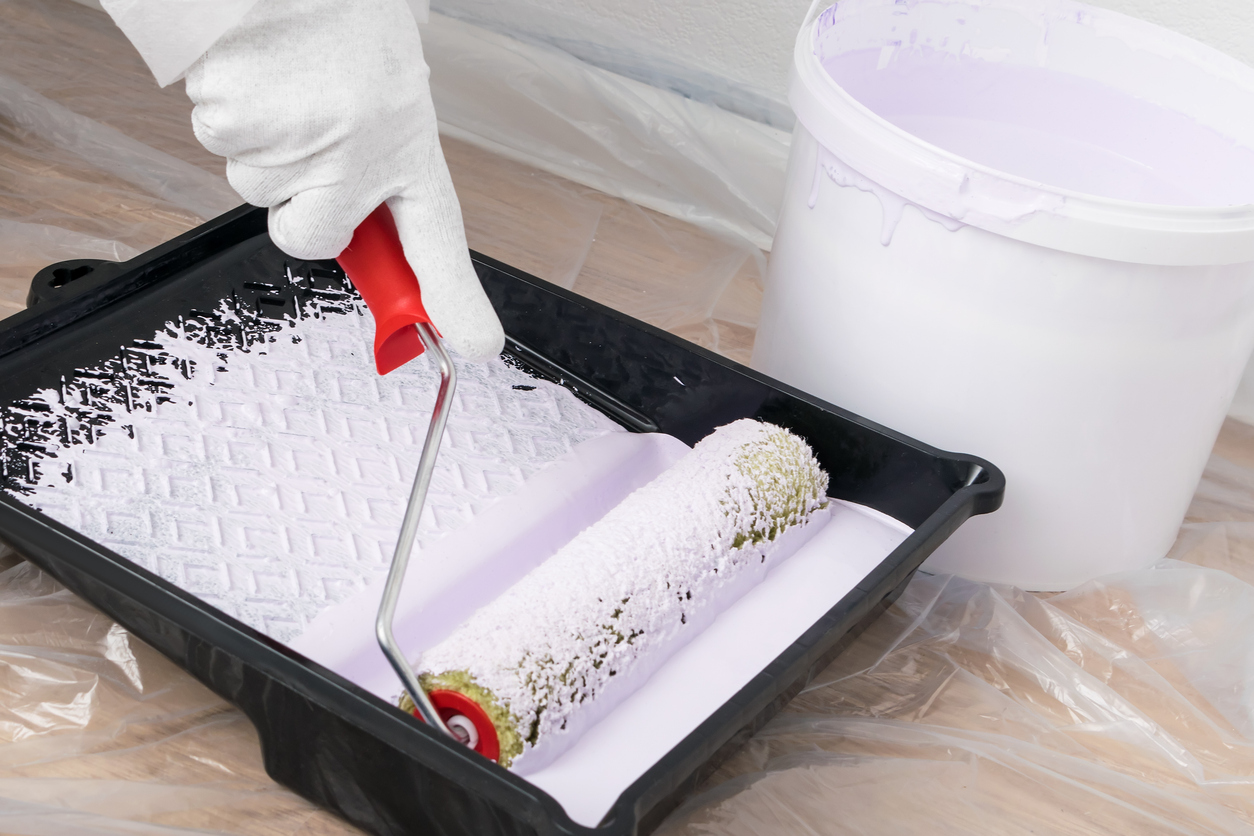Painting small rooms can be a rewarding project that makes a space feel fresh and inviting. With a few strategic tips, you can make the most of the limited area and create a more open and airy feel. In this article, we will share useful tips to help you successfully paint small rooms and achieve the best results.
Is It Difficult to Paint Small Rooms?
Painting small rooms can be challenging, but it is not necessarily difficult. The limited space means you need to be more careful with your movements to avoid knocking over furniture or getting paint on surfaces you don’t want to be painted. It’s also important to choose the right colors to make the room feel larger and more open.
One of the main challenges is dealing with tight corners and edges. Using small brushes or angled brushes can help you reach these areas more easily. Additionally, using painter’s tape can ensure clean lines and prevent paint from getting on trim or adjacent walls.
Another consideration is ventilation. Small rooms can become stuffy quickly when painting, so it’s important to keep windows open or use fans to ensure proper airflow. This helps the paint dry faster and reduces the smell of paint fumes.
Despite these challenges, painting a small room can be a manageable project with the right preparation and tools. Taking the time to plan and prepare can lead to a successful and satisfying result.
Tips for Painting Small Rooms
Painting small rooms can be tricky, but with the right approach, you can make the space look bigger and brighter. Here are some useful tips to help you get the best results.
Choose Light Colors
Light colors can make a small room feel larger and more open. Shades like white, light gray, and pastel hues reflect light better, creating the illusion of more space. Dark colors can make the room feel cramped, so it’s best to avoid them for small areas.
Use Glossy Finishes
Glossy or semi-gloss finishes can also help reflect light around the room. This can enhance the sense of space and make the walls easier to clean. However, keep in mind that glossy finishes can highlight imperfections, so proper wall preparation is key.
Keep It Simple
Avoid using too many colors or patterns in a small room. Sticking to a simple color scheme can help create a cohesive look and prevent the space from feeling cluttered. Using the same color for the walls and trim can also make the room feel more seamless.
Paint the Ceiling
Painting the ceiling a lighter color than the walls can create the illusion of height. This trick can make the room feel taller and more spacious. Using a flat or matte finish for the ceiling can help hide any imperfections.
Use Accent Walls
If you want to add some interest without overwhelming the space, consider painting one accent wall. Choose a color that complements the main color scheme but is a few shades darker or bolder. This can add depth and dimension to the room.
Optimize Lighting
Good lighting can make a huge difference in a small room. Use a combination of natural and artificial light to brighten up the space. Strategically placed lamps, sconces, and overhead lights can help ensure that the room is well-lit at all times.
Declutter Before Painting
Before you start painting, take the time to declutter the room. Remove any unnecessary furniture, decorations, and personal items. This will make the painting process easier and help you achieve a cleaner, more polished look.
Protect Your Furniture
If you can’t move all the furniture out of the room, make sure to cover it with drop cloths or plastic sheeting. This will protect your belongings from paint splatters and make cleanup easier. Move furniture to the center of the room and cover it completely.
Use Quality Tools
Invest in high-quality brushes, rollers, and painter’s tape. Good tools can make a noticeable difference in the ease of application and the final result. Cheap tools can leave streaks and uneven finishes, so it’s worth spending a bit more for better quality.
Plan Your Approach
Plan your painting approach before you start. Begin with the edges and corners using a brush, then move to the larger areas with a roller. Working systematically will help you cover the entire room efficiently and avoid missed spots.
Should You Get Professional Help for Painting Small Rooms?
Deciding whether to get professional help for painting small rooms can be difficult for many, especially those who have a tight budget. However, it cannot be denied that there are plenty of benefits when it comes to hiring professional painters to improve the appearance of small rooms. Here are some reasons why hiring a professional might be the right choice for you.
- Expertise: Professionals have the experience and skills to handle any painting job. They know the best techniques for achieving a smooth, even finish and can handle tricky areas like corners and edges.
- Quality Tools: Professional painters use high-quality tools and materials, which ensures a better result than using cheaper, less effective equipment you might have at home.
- Time-Saving: Hiring professionals can save you a lot of time. They can complete the job more quickly and efficiently, freeing you up to focus on other tasks or simply relax.
- Attention to Detail: Professionals pay close attention to detail, ensuring that every part of the room is painted perfectly. They can spot and fix imperfections that you might miss.
- Proper Preparation: Preparing the walls properly is crucial for a good paint job. Professionals know how to clean, sand, and prime surfaces to make sure the paint adheres well and lasts longer.
- Safety: Painting can involve working on ladders or handling chemicals. Professionals have the training and equipment to do the job safely, reducing the risk of accidents.
- Stress-Free: Letting professionals handle the painting can reduce stress. You won’t have to worry about making mistakes or dealing with the mess that comes with painting.
- Consistent Results: Professional painters can achieve a consistent color and finish throughout the room. They know how to avoid common problems like streaks, drips, and uneven coverage.
- Warranty: Many professional painters offer warranties for their work. This provides peace of mind, knowing that if any issues arise, they will come back to fix them at no extra cost.
- Value: While hiring professionals might be more expensive upfront, the quality and longevity of the work can save you money in the long run by avoiding the need for frequent touch-ups or repaints.
Considering these reasons can help you decide whether to hire professional painters for your small room project.
Conclusion
Painting small rooms can be a rewarding project that makes a space feel fresh and inviting. By choosing the right colors, using quality tools, and following practical tips, you can achieve great results.
If you need professional help with painting small rooms, contact Custom Painting, Inc. Call us at 925-866-9610 or fill out our Contact Form.



